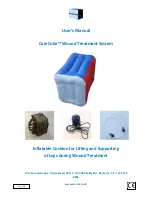
www.petsafe.net
10
EN
FR
ES
NL
IT
DE
STEP 3
Position the Boundary Wire
Risk of injury. Wire on top of the ground may be a trip hazard. Use care in how you place your wires.
Lay out the Boundary Wire using your planned boundary and test the system BEFORE burying the wire or
attaching it to an existing fence. This will make any layout changes easier. Work carefully. A nick in the
wire insulation can diminish the signal strength and create a weak area where your pet can escape.
Running the Boundary Wire parallel to and within 3 m of electrical wires, neighbouring
containment systems, telephone wires, television or antenna cables, or satellite dishes may
cause an inconsistent signal. If you must cross any of these, do so at 90-degree angles
(perpendicularly)
(3A)
.
If separating the wire by at least 3 m from a neighbouring containment system’s wire does not
reduce the inconsistent signal, contact the Customer Care Centre.
To Twist the Boundary Wire
Twisting the Boundary Wire cancels the
signal and allows your pet to cross over
that area without receiving a stimulation
(3B)
. To ensure the signal is cancelled,
it is recommended that you cut and
splice the Boundary Wire between
each twisted section. The signal cannot
be cancelled by running the wire
through plastic or metal piping. Splicing
shielded cable to the Boundary Wire
will also not cancel the signal. Refer to
figure
(3C)
for the correct method for
twisting the wire. You can twist your
own wire by cutting two equal lengths
of Boundary Wire supplied and twisting
them together. Anchor one end of the
wires to something secure and insert the
other end in a power drill. Pull the wire taut. The drill enables you to twist the wire quickly. Twist the Boundary Wire 30 times per
metre to cancel the signal. Once you have completed your boundary layout, insert the twisted wire into the transmitter.
3 m
3 m
90◦
Boundary
Wire
Buried Cable
3A
30 Twists /m
3B
TWISTED WIRES
BOUNDARY WIRE
WATERPROOF SPLICE
CORRECT
INCORRECT
3C











































